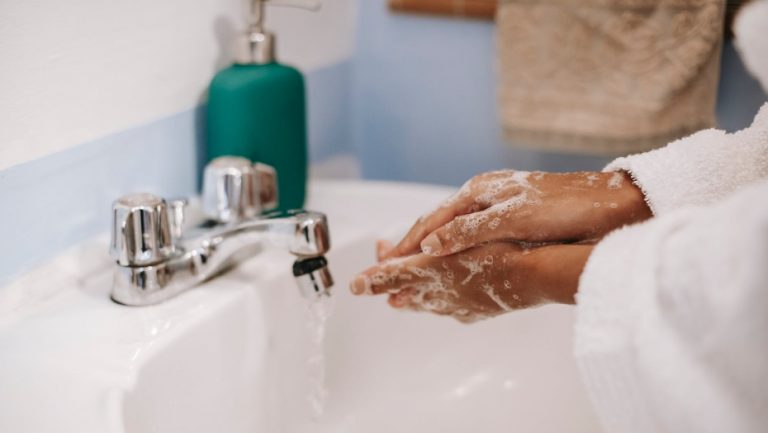It is especially important to wash your hands at a time when there are various viruses and their spread. Although this seems obvious, there are a number of conditions to consider.
Based on the optimal duration and type of hand washing, I have created this article. I hope you learn from it and from now on wash your hands correctly!
When to wash your hands
First things first, it is important to know when to wash your hands.
It is believed that frequent washing hands can avoid bad bacteria. But in reality it is important to be aware of the times when it is recommended to wash your hands. When sitting at home and watching TV, it is not necessary to run to the bathroom to wash your hands during each advertising break.
Here’s when to wash your hands:
- right after visiting the toilet;
- after changing diapers for a child or helping a child to visit the toilet;
- also after sniffing, coughing or sneezing;
- after touching the animals, feeding the animals or collecting their waste;
- after cleaning and touching the waste;
- also after visiting public places, including returning home, coming to kindergarten or school;
- before eating and drinking or serving food;
- right before and after cooking;
- before and after wound care;
- before using the medicine, applying make-up, handling contact lenses;
- when the hands are obviously dirty;
- if in a particular situation there are doubts about the cleanliness of the hands;
- after the care of the infected patient or after contact with the patient’s care items, toys and other items with which the patient has contact.
How to wash hands correctly
To make hand washing even more effective, you need to know the right hand washing techniques to follow. Although at first it may seem like a long guide, it’s actually quite easy to keep in mind.
Before washing your hands, make sure that you have all the necessary accessories for washing your hands.
- Wet hands and forearms under running water.
- Cover your hands with soap (it is recommended to use liquid soap from a closed container, as various microorganisms from previous users may remain on hard soap surfaces and soap dishes).
- Soap whipped in the hands.
- Soap all hand surfaces vigorously for at least 15 seconds, as the effectiveness of each detergent depends on the duration of its action.
- In doing so, rub your palms, finger gaps, fingertips in the palms of the opposite hand, the surface of both palms, both thumbs in the palms of the opposite hand, as well as clean the nails.
- Do not keep your hands under the water jet during this time. It should be remembered that after superficial washing of the hands, there are places where infectious agents may remain.
- Rinse hands under running water for at least 10 seconds. Avoid splashing water or touching the sink during hand washing.
- Dry your hands with a clean towel. Disposable paper towels are recommended outside the home. Shared cloth towels are not recommended, as it is not known how thoroughly and effectively people who used the towel before you washed your hands.
- Throw the paper towel in the bin without touching the trash with your hands.
If hand washing equipment is not available, the water supply is interrupted or water meeting the criteria for drinking water is not available, hand disinfection is a good option. Hand disinfection without washing will only work if the hands are not obviously dirty.
Hopefully now you know better!
Let’s stay healthy!
